Top 10 Biggest & Majestic Hydroelectric Power Plants In India
| Table of Contents |
Renewable Energy Sources in India
India is the seventh-largest producer of hydroelectric energy in the world, with a total installed capacity of 47,057 MW.
India, which has a population of over 1.4 billion, is the third-largest consumer and producer of electricity in the world, with 403.7 GW of installed capacity as of June 2022. This electricity is primarily produced by thermal power plants using fossil fuels.
However, it has committed to reducing climate change by promoting the development of more renewable energy sources, such as wind and solar power. By constructing nuclear power plants, the nation is also concentrating on developing nuclear energy.
ower development in India began at the end of the 19th century when electricity was first made available in Darjeeling in 1897. A hydropower station in Sivasamundram, Karnataka, was then put into operation in 1902.
Given that energy is a crucial component of economic growth and enhances quality of life
The Unexploited Hydropower Potential of India
One of the most important renewable energy sources for producing electrical energy in India has been hydroelectric power projects. India has not fully exploited its hydropower potential, despite having the fifth-largest hydropower potential (1,48,700 MW) after China, Brazil, the US, and Canada.
India had 197 hydroelectric power plants that were all in operation as of March 2022, producing 46,850 MW. However, a quarter of this power is produced by the seven biggest hydroelectric power plants.
The seven largest hydroelectric power projects in India as of July 2022 are listed in the following sections.
What is the Largest Hydroelectric Power Plant in India Today
The Koyna Hydroelectric Project, located in the Satara district of Maharashtra, is the largest hydroelectric power plant in the country. The project is managed by the State Electricity Board. The Koyna Dam, one of the largest dams on the Koyna River, is part of the complex of four dams that make up the Konya Hydroelectric Project. It is located close to the village of Koynanagar. The largest hydroelectric power plant in India has a 1960 MW total capacity.
Each of the project's four stages has a subterranean power station constructed deep within the Western Ghats. With their extremely tall mountain ranges, the Western Ghats produce enormous hydraulic heads. This is a key distinction between the western and eastern ghats. The first stage of this massive hydroelectric power plant in India was put into operation in May 1962, and the final stage wasn't until 1981.
What is the Oldest Hydroelectric Power Plant in India
Sidrapong Hydroelectric Power Station, situated 12 kilometers from Darjeeling Town at the foothills of the Arya Tea Estate, is the country's first hydroelectric power station. On November 10th, 1897, the Sidrapong hydroelectric power station, also known as the Sidrapong hydel power station, was officially opened. The power station's initial output was 265 kW. The total capacity of this capacity was raised to 1000 kW in 1916.
The project's outdated equipment was replaced in 1931 with more effective triple-phase transmission. WBSEB, or the West Bengal State Electricity Board, took over the operation in 1978. The power station was severely impacted by the landslide after two years, but it was restored in 1997. The first hydroelectric power plant in India is now recognized by the national government as a cultural heritage.
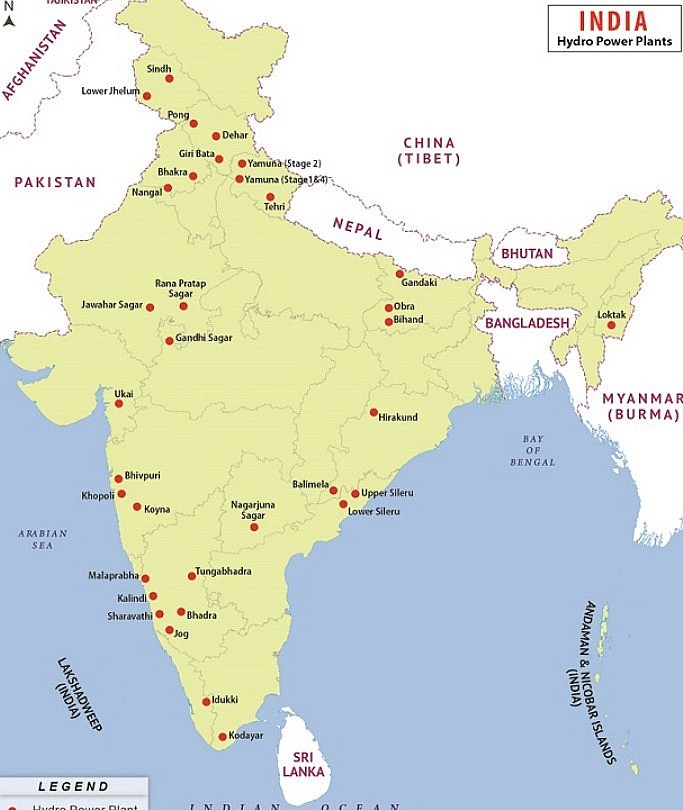 |
| Hydroelectric Power Plant in India Map |
How many hydroelectric plants are there in India?
In India, there are 197 hydroelectric power plants. India is thought to have a hydroelectric potential of around 148,700 MW, of which it has already developed 42,783 MW of capacity and has another 13,616 MW under development. India ranks third in the world for both energy production and consumption. It uses coal, water, wind, and solar energy to produce energy.
Classification of Hydroelectric Power Plants
According to their size, hydropower projects in India are classified as large or small hydropower projects.Large hydropower projects are those that typically entail the construction of sizable dams, reservoirs, and powerhouses and typically have an installed capacity of over 25 megawatts (MW).Small hydropower facilities, defined as those with a capacity of 25MW or less, are governed by the Ministry of New and Renewable Energy (MNRE). A small hydroelectric project is categorized in the following ways according to its capacity:
| First hydroelectric power station: Sidrapong hydroelectric power station Highest hydroelectric power project in the country: Tehri Hydro Electric Power Plant Nathpa Jhakri Hydroelectric Power Plant: Srisailam Hydro Power Plant Biggest underground hydroelectric power project: Nathpa Jhakri Hydroelectric Power Plant Largest completed hydroelectric power plant in India: Koyna Hydroelectric Project World’s second-largest concrete dam: Sardar Sarovar Dam |
♦ Check More: Top 10 Biggest & Most Majestic Hydroelectric Plants in the World
Top 10+ Biggest Hydroelectric Power Plants In India
1. Tehri Hydropower Plant
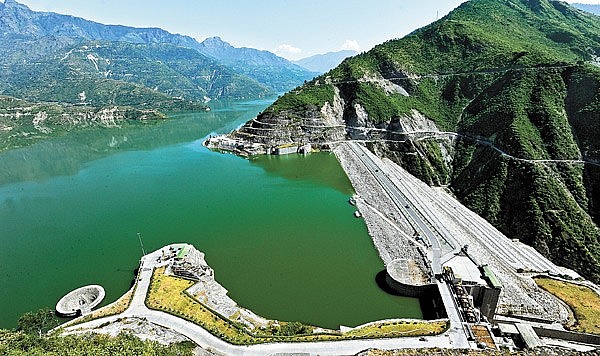 |
| Tehri Hydroelectric power plant |
Location: Bhagirathi river, Uttarakhand, India.
Installed Capacity: 2400 MW.
Operated by: NTPC took over the power complex from THDC.
It began construction in 1978 and started operating in 2006.
The 1000 MW Tehri Pumped Storage Plant, 600 MW Tehri Dam, and 400 MW Koteshwar Dam are all part of the Tehri Hydropower Complex, which is located on the Bhagirathi River. The Tehri dam, a 575m high and 1,128m wide embankment with a surface area of 52 square kilometers, is the tallest structure in India. Uttarakhand, Haryana, Delhi, Punjab, Uttara Pradesh, Chandigarh, Himachal Pradesh, Rajasthan, and Jammu and Kashmir all use the Tehri Lake for irrigation and municipal water supplies.
Although the Tehri Dam was designed in 1972, actual construction didn't start until 1978, following a number of delays brought on by social events. The Tehri Dam Project's development saw a significant contribution from Tehri Hydro Development Corporation Limited (THDC) in 1986. The hydro complex added a second storage facility and the 400 MW Koteshwar Dam, bringing the total capacity of the power plant to 2400 MW.
2. Koyna hydroelectric project
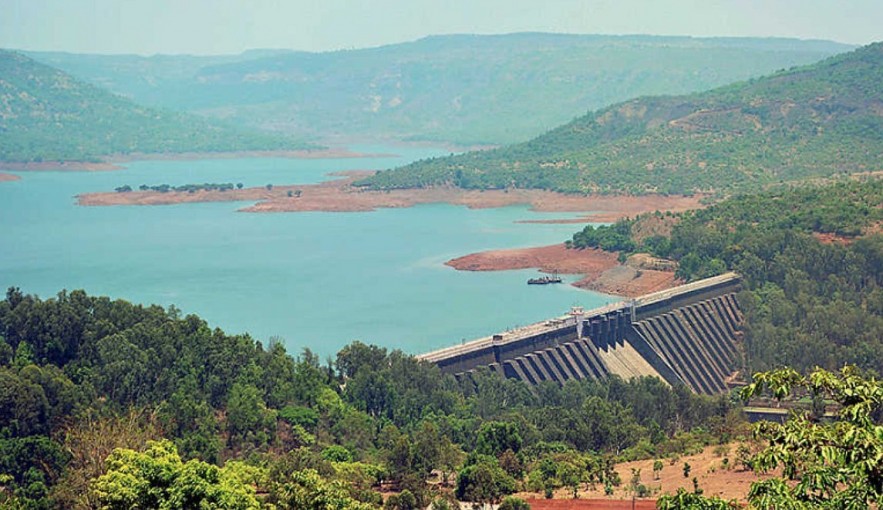 |
| Koyna Hydroelectric Power Plant |
Location: Patan, Maharashtra, India.
Installed Capacity: 1960 MW.
Operated by: MAHAGENCO and Maharashtra State Power Generation.
It started being built in 1954 and began running in 1964.
The Koyna hydroelectric project, located in the western ghats with the generators installed deep in the mountains, is currently the largest completed project in India. Because of the Koyna Dam's enormous hydropower output, the river is also referred to as the "Lifeline of Maharashtra". Despite having four dams, the Koyna Dam and Kolkewadi Dam served as the primary hydroelectric energy producers.
The Koyna Dam is an 891.78 square kilometer causeway made of rubble concrete that is 103.2 meters tall and 807.2 meters wide. Numerous earthquakes, including the one in 1967, caused minor cracks in the dam that led to hydrostatic pressures that were later relieved. The spillway section was reinforced in 2006 to withstand any upcoming earthquakes.
3. Sri Sailam Dam
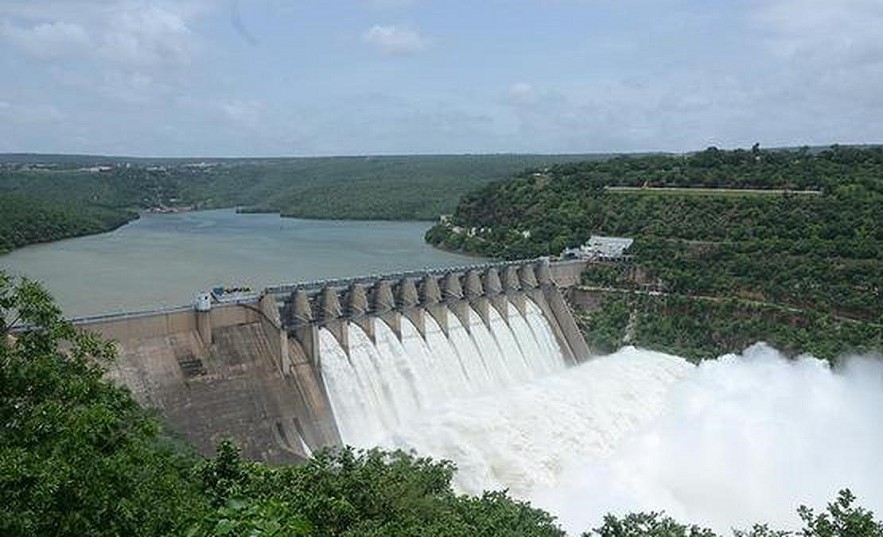 |
| Sri Sailam Dam |
Location: Nallamalla forest, Kurnool district, Andhra Pradesh, India.
Installed Capacity: 1670 MW.
Operated by: APGENCO
It started being built in 1960, took 20 years to complete, and only began operating in 1987.
The Sri Sailam Dam is India's second-largest operational hydroelectric power plant. One of the few deep gorge dams in the nation, the Krishna River Dam was built across the Krishna River in the Nagarkurnool district in Telangana and the Nandyal district in Andhra Pradesh. It was built in a 300 m deep gorge in the Nallamala Hills close to the temple town of Sri Sailam. The resulting reservoir covers 616 km2 in total.
The dam has radical crest gates and is 145.10 meters tall and 512 meters wide. The left bank powerhouse has six 150 megawatt (200,000 hp) reversible Francis-pump turbines for pumped-storage operation, and it is entirely underground. Up to 200 cubic seconds of water per turbine can be pumped. The right bank powerhouse, on the other hand, is partially underground and is home to seven 110 megawatt (150,000 hp) Francis turbine generators.
The total project cost was INR 10 billion in capital expenditures. The dam experienced excessive flooding in 1998, which compelled the dam's administrators to seek repairs. The dam was unable to produce electricity for a full year as a result. The Sri Sailam Dam provides irrigation and municipal drinking water to a number of Andhra Pradesh and Telangana districts, including Kurnool, Nellore, Mahbubnagar, and the Rayalaseema region.
4. Nathpa Jhakri Dam
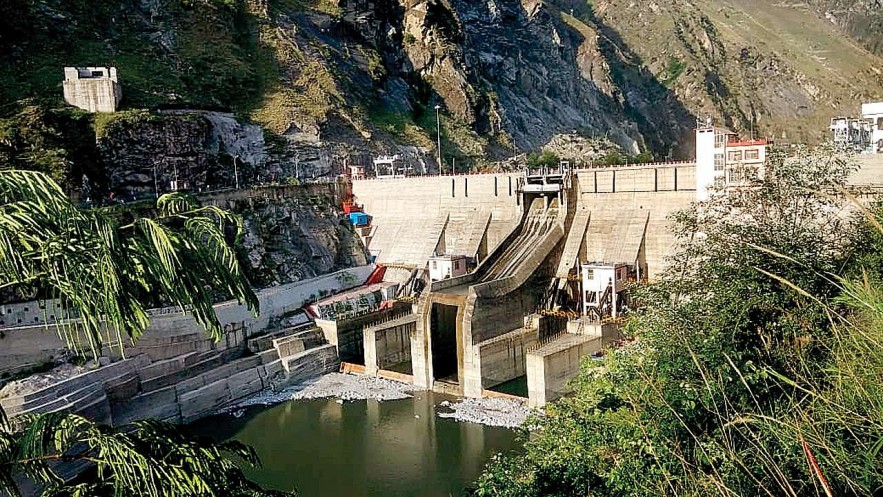 |
| Nathpa Jhakri Dam |
Location: Nathpa village, Himachal Pradesh, India.
Installed Capacity: 1530 MW.
Operated by: POSOCO and SJVN.
It began its construction in 1993 and started operating in 2004.
The most important underground hydroelectric power project is the Nathpa Jhakri Dam, which was constructed on the Sutlej river. This 185-meter-wide, 67.5-meter-tall concrete gravity dam has an underground power plant that produces 1530 MW of electricity. Through the intake structure, the water flow is redirected and piped to the underground power station. Then, six 250 MW Francis Turbines produce an annual output of about 6,778 MW.
SJVN Limited owned this power project, which fell under POSOCO's purview. To maintain the Nathpa Jharki Dam, the State Government of Himachal Pradesh and the Union Government of India formed the SJVN Limited.
5. Sardar Sarovar Dam
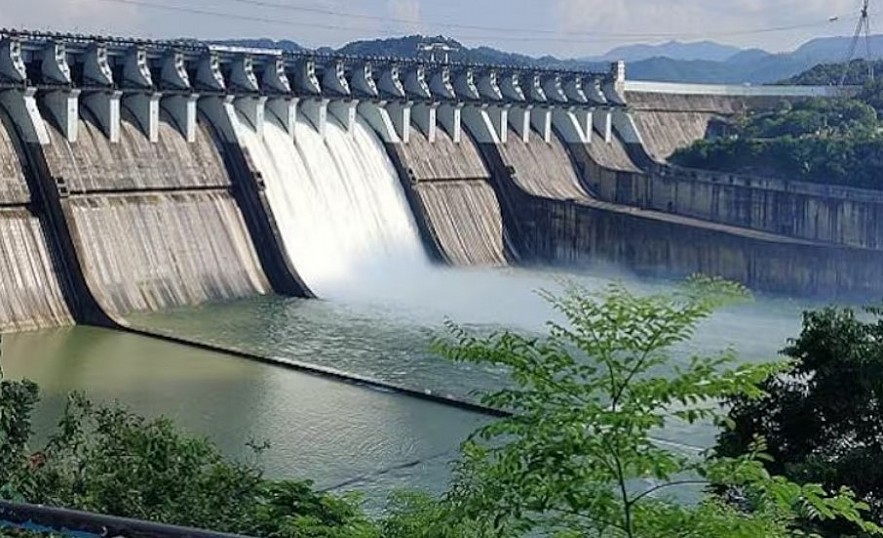 |
| Sardar Sarovar dam |
Location: Navagam, Gujarath, India.
Installed Capacity: 1450 MW
Operated by: Owned and operated by Sardar Sarovar Narmada Nigam.
It began construction in 1987 and started operating in 2017.
One of the 30 dams planned as part of the Narmada Valley Projects is the Sardar Sarovar Dam, which is constructed on the Narmada River. It is 138.66 m tall without a foundation and 163 m tall with a foundation. The Grand Coulee Dam across the Columbia River in the United States is the largest concrete dam in the world, surpassing the 1210 m wide gravity dam.
The six 200 MW Francis-type turbines power the hydroelectric plant. Having multiple uses, the river valley project irrigates 17,920 km2 of west-central India's draught-prone regions, particularly the 12 districts of Rajasthan and Gujarat. Additionally, it supplies drinking water to Gujarat, Maharashtra, Madhya Pradesh, and Rajasthan, four states in central India.
6. Bhakra Dam
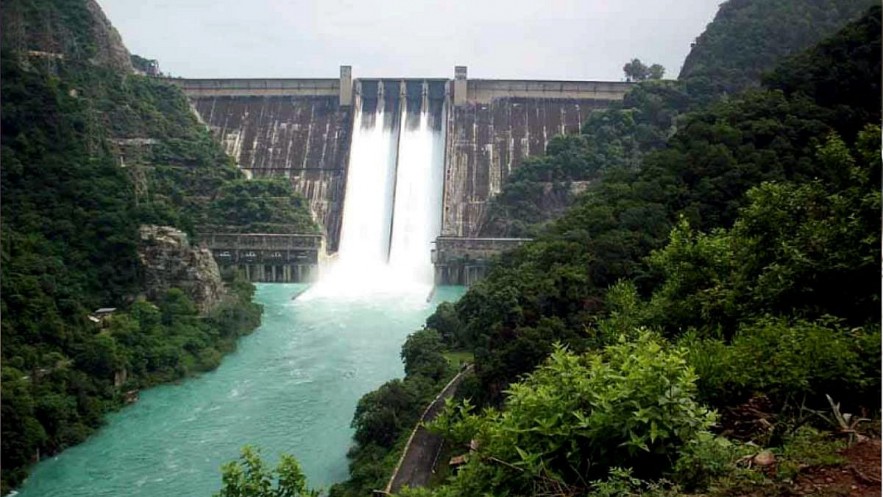 |
| Bhakra Dam |
Location: Bilaspur district, Himachal Pradesh, India.
Installed Capacity: 1325 MW.
Operated by: Bhakra Management Board.
It began its construction in 1948 and started operating in 1963.
One of the tallest gravity dams in the world, the Bhakra Dam rises 226 meters above the Sutlej River in the Himachal Pradesh district of Bilaspur. The dam is a component of the larger Bhakra-Nangal multipurpose river valley project, which aims to irrigate the neighboring states, produce hydroelectricity, and prevent floods in the Satluj-Beas basin.
Before the country's independence, the project plan and the dam's preliminary construction had already begun. However, the official building process began in 1948 and took 15 years to complete. Ten power generators, five on each side of the dam, were supplied by the Soviet Union and Japan, respectively. The right powerhouse has 5 x 157 MW turbines, while the left powerhouse has 3 x 108 MW and 2 x 126 MW Francis turbines. The capacity of the power generation was later increased to over 1500 MW by the addition of three more power plants: Ganguwal (77.65 MW), Kotla (77.65 MW), and Anandpur (134 MW).
After the Indira Sagar Dam in Madhya Pradesh and Nagarjuna Sagar in Andhra Pradesh/Telangana, the Gobind Sagar Reservoir's 166 km2 makes it the largest freshwater reservoir in India. Punjab, Haryana, and Rajasthan's 40,000 km2 of land are irrigated by water from the Bhakra canal.
7. Chamera Dam
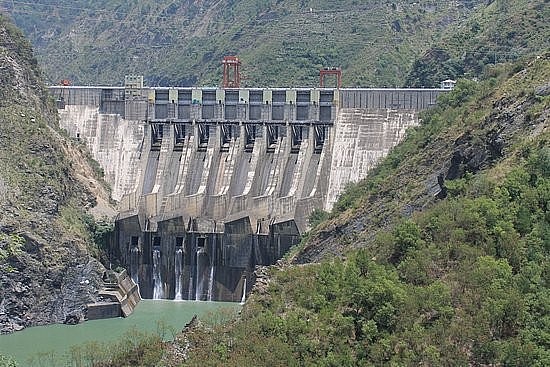 |
| Chamera Dam |
Location: Dalhousie, Chamba District, Himachal Pradesh, India.
Installed Capacity: 1071 MW.
Operated by: NHPC
It began its construction in 1983 and started operating in 1994.
With a combined hydropower capacity of 1071 MW, the Chamera Dam is a multipurpose hydropower project in the Chamba district of Himachal Pradesh. The goal of this hydropower development project is to generate electricity and provide drinking water using the water resources of the Ravi river.
This dam's construction was first proposed in 1982. The turning point was chosen for the dam's construction after a review of the River Ravi's hydropower potential. After it was finished, the project provided the nearby states of Punjab, Haryana, and Delhi with hydroelectric energy.
The dam is broken up into three phases: Chamera I (540 MW), Chamera II (300 MW), and Chamera III (231 MW) hydropower plants. A 472.5 km2 catchment area is created by the dam. The reservoir has a 110 MCM storage capacity and a 1,273 BCM annual inflow.
8. Sharavathi Project
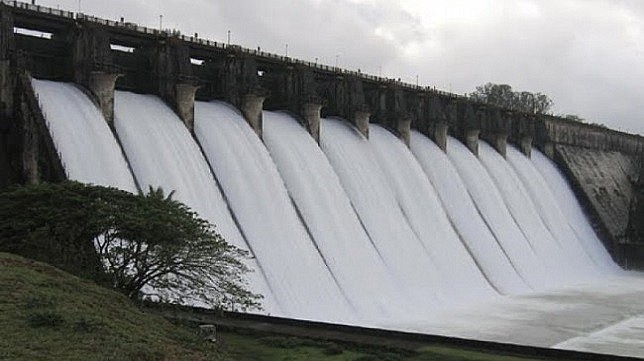 |
| Sharavathi Hydro Power Plant in Karnataka |
Operator: Karnataka Power Corporation Limited
Location: Karnataka
Total Capacity (MW): 1035
The project is currently owned by Karnataka Power.
The gross head of the project is 465m. The project generated 5,000 GWh of electricity.
GE Renewable Energy and Bharat Heavy Electricals both provided the turbines for the hydropower project.
Hitachi Mitsubishi Hydro, Bharat Heavy Electricals, and Andritz Hydro provided the electric generators for the project.
In Karnataka, the Sharavathi Hydro Power Plant is inaugurated in 1964. It has a 1035 Megawatt installed and approved capacity. Major projects with a capacity greater than 25 MW fall under this category. The power plant is currently in an operational state. The Sharavathi River is the source of water used to produce electricity. Rivers flowing west through the basin. The Southern Hydroelectric Region is where the power plant is situated. The Karnataka Government owns the power plant, and Karnataka Power Corporation Limited is in charge of running it.
Karnataka and other south Indian states are the power plant's Beneficiary States. In 1977, the power project was finished. The power plant uses 10 turbines in total, with each having a capacity of 103.5 MW. The power plant uses Pelton turbines of a specific type. Neyrpic France is the turbine manufacturer for units one through eight, and Bharat Heavy Electricals Limited of India is the manufacturer of units nine and ten. Additionally, Hitachi Japan is the producer of the generator for both the first and second unit. The third through eighth units' generators are made by GE Canada, and the ninth and tenth units' generators are made by BHEL India.
How to Get There: In the Kargal town of the Sagara subdivision of Shimoga District in the state of Karnataka is where you'll find the Sharavathi Hydro Power Plant. This power plant is accessible by road, rail, or air. The closest train station is Sagara Jambagaru, and the closest international airport is Mangalore Airport, which is located about 195 kilometers from Shimoga city. From the nearest city or towns to the power plant, there are frequent bus and taxi services available.
9. Indira Sagar Dam
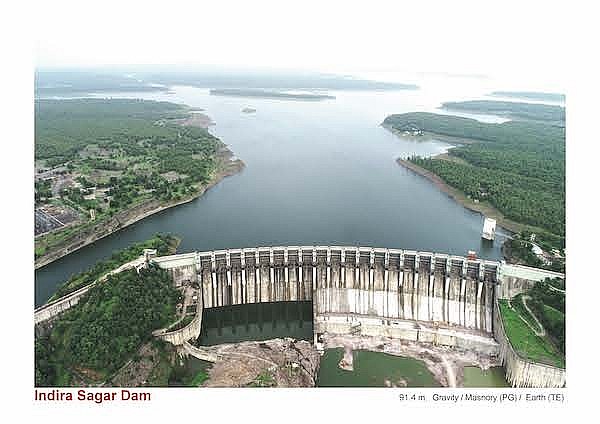 |
| Indira Sagar Dam |
Operator: Narmada Valley Development Authority
Location: Madhya Pradesh
Total Capacity (MW): 1000
The hydropower project's chosen turbine supplier is Bharat Heavy Electricals. The company delivered 8 units of 125MW nameplate capacity Francis turbines.
For the project, Bharat Heavy Electricals provided 8 electric generators.
In the Khandwa district of Madhya Pradesh in India, at Narmadanagar, Mundi on the Narmada River, is the multipurpose Indirasagar Dam project. On October 23, 1984, the late Smt. Indira Gandhi, a former Indian prime minister, laid the project's cornerstone. The main dam's construction got under way in 1992. Omkareshwar, Maheshwar, and the Sardar Sarovar Project are ISP's downstream projects.
The Project calls for building a 653-meter-long, 92-meter-high concrete gravity dam. In the Madhya Pradesh districts of Khandwa and Khargone, it provides irrigation on 1,230 square kilometers of land with an annual production of 2.7 billion units and generates 1,000 MW (8125 MW) of installed capacity of electricity. There was created a reservoir measuring 12,200,000,000 m3 (9,890,701 acre-ft). With a storage capacity of 12.22 billion cubic meters, it holds the largest reservoir in India, ahead of Nagarjuna Sagar between Telangana and Andhra Pradesh. The dam was constructed through a partnership between the National Hydroelectric Power Corporation and Madhya Pradesh Irrigation. It was put into service in May 2005.
10. Karcham Wangtoo Hydroelectric Plant
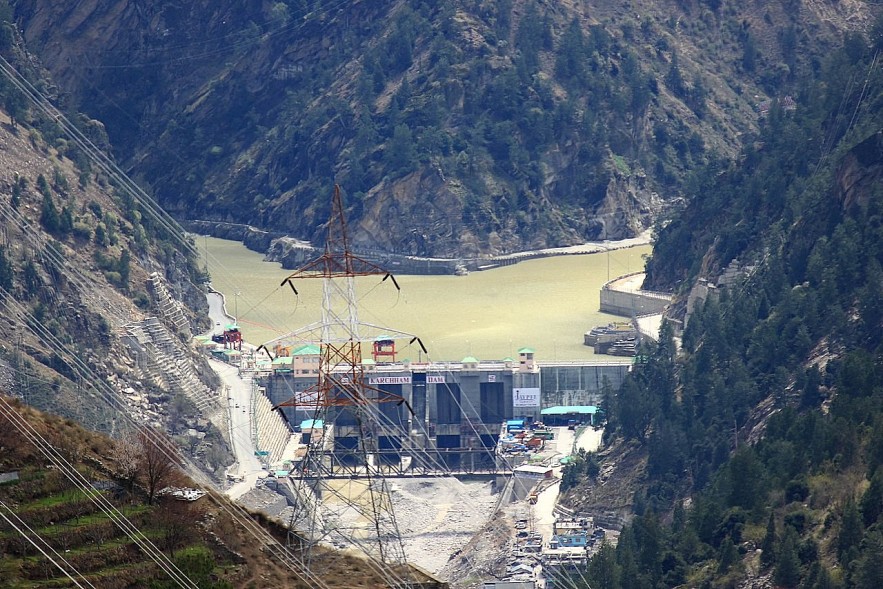 |
| Karcham Wangtoo Hydro Project |
Operator: Jaypee Group
Location: Himachal Pradesh
Total Capacity (MW): 1045
Construction on the project began in 2005, and it began operating for profit in 2011.
The project's power offtakers are Dakshin Haryana Bijli Vitran Nigam, Punjab State Power, and Uttar Haryana Bijli Vitran Nigam.
The hydropower project chose Andritz Hydro as its turbine supplier. Four units of 255MW nameplate capacity Francis turbines were provided by the company.
For the project, Voith Hydro Holding provided 4 electric generators. The generator has a 340 MVA capacity.
The 1,045MW Karcham Wangtoo hydroelectric project. It is situated in Himachal Pradesh, India, on the Sutlej river or basin. The project is ongoing, according to GlobalData, which tracks and profiles more than 170,000 power plants globally. It has undergone a single phase of development. Construction on the project began in 2005, and it began operating for profit in 2011.
The project was created by Jaiprakash Power Ventures, and JSW Hydro Energy currently owns a 100% stake in it.
It is a run-of-river project, Karcham Wangtoo. The project has a gross head and net head of 298.73 million and 275.93 million, respectively. There are four penstocks, long pipes or channels, in total, that transport water from the hydroelectric reservoir to the turbines inside the actual power plant. The penstock measures 290.5 meters. The penstock has a 4.75m diameter. 4,463.88 GWh of electricity were produced by the project.
Upcoming Major and Medium Dam Projects in India
A report by the Ministry of Jalshakti, Government of India, states that 21 major and medium dam projects are currently in the appraisal stage with the CWC (Central Water Commission).
Par-Tapi Narmada Link Project - Gujarat/ Maharashtra
Bina Complex Irrigation & Multipurpose project - Madhya Pradesh
Kalisindh Multipurpose Irrigation Project Ph-II - Rajasthan
Eastern Rajasthan Canal Project - Rajasthan
Indrapuri Reservoir Project - Bihar
Other Major Hydro Power Plants in India
11. Dehar (Pandoh) Power Project
Operator: Bhakra Beas Management Board
Location: Himachal Pradesh
12. Nagarjuna Sagar Dam Guntur
Operator: Andhra Pradesh Power Generation Corporation Limited
Location: Andhra Pradesh
13. Purulia Pass
Operator: West Bengal Electricity Distribution Company
Location: West Bengal
14. Idukki
Operator: Kerala State Electricity Board
Location: Kerala
15. Salal I & II
Operator: NHPC Limited
Location: Jammu & Kashmir
16. Upper Indravati
Operator: Odisha Hydro Power Corporation
Location: Orissa
17. Ranjit Sagar Dam
Operator: Punjab State Power Corporation Limited
Location: Punjab
18. Omkareshwar
Operator: Narmada Hydroelectric Development Corporation
Location: Madhya Pradesh
19. Belimela Dam
Operator: Odisha Hydro Power Corporation
Location: Orissa
20. Teesta Dam
Operator: NHPC Limited
Location: Sikkim
FAQs – Hydroelectric Power Plants in India Today
How many hydroelectric power plants in india?
According to the International Hydropower Association, India now has 197 hydroelectric power facilities with a capacity of more than 25 megawatts.
Which Indian hydroelectric plant has the largest capacity?
The Tehri Dam in Uttarakhand, the highest hydroelectric power project in the nation, tops the list of hydroelectric power plants in India.
Which hydropower plant in India was the first?
India's first hydroelectric power plant was constructed in Darjeeling, West Bengal. A 130 kW project was constructed in Sidrapong (Darjeeling) in the year 1897. Additionally, this hydroelectric facility was the first hydroelectric facility in Asia.
Q. Which hydroelectric power plant in India is the tallest?
India’s tallest hydroelectric power plant, Tehri Dam in Uttarakhand, has a 2400 megawatt capacity.
In Conclusion
Depending on their sizes, hydropower projects are divided into large and small hydro projects. Hydropower plants in India with a capacity of 25MW or less are categorized as small hydro, which is further subdivided into the micro (100MW or less), mini (101kW–2MW), and small hydro (2–25MW) segments.
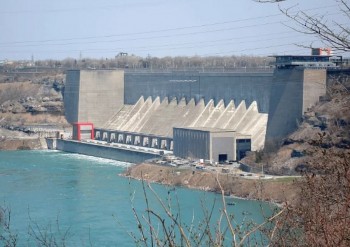 Top 6 Biggest & Majestic Hydroelectric Power Plants in the U.S for Discovering Top 6 Biggest & Majestic Hydroelectric Power Plants in the U.S for Discovering One of the oldest and most popular renewable energy sources is hydropower. Which hydroelectric power plants in the US are the largest? |
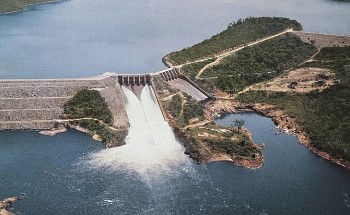 Top 10+ Biggest and Majestic Hydroelectric Plants in Africa Top 10+ Biggest and Majestic Hydroelectric Plants in Africa Africa has an abundance of water systems, which has led to a rise in the building of large dams to control the distribution of water ... |
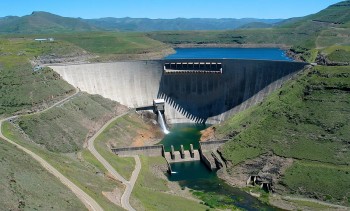 Top 5+ Biggest & Majestic Hydroelectric Plants in South Africa Top 5+ Biggest & Majestic Hydroelectric Plants in South Africa Explore the top of the largest and most majestic hydroelectric power plants in South Africa. These machines not only provide electricity but also are extremely ... |
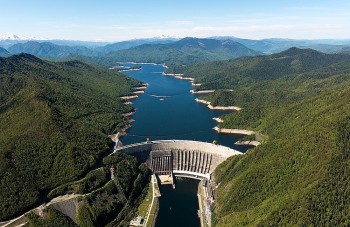 Top 10 Biggest & Most Majestic Hydroelectric Plants in the World Top 10 Biggest & Most Majestic Hydroelectric Plants in the World Explore the world's 10 largest and most majestic hydroelectric plants/dams based on generating capacity. |























